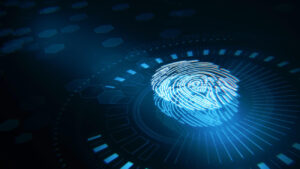Biometric technology is gaining rapid traction in the domain of law enforcement!
The use of biometric technology in law enforcement has evolved significantly over the years. Early forms of biometric identification, such as fingerprinting, have been used for over a century. More recently, advancements in technology have led to the development of other forms of biometrics, such as facial recognition, iris scanning, and DNA analysis, which are now also used by law enforcement agencies. These technologies have improved the ability of law enforcement to identify and track individuals, but they have also raised concerns about privacy and civil liberties.
Use of biometric technology in law enforcement
Biometric technology is widely used in law enforcement to identify and track individuals. One common application is the use of fingerprint and DNA analysis to match suspects to crime scenes or to identify suspects in criminal investigations. Facial recognition technology is also used to identify suspects in surveillance footage or to compare against a database of known criminals.
Biometric technology is also used in border control and immigration enforcement to verify the identities of travelers. Biometric data is also used in prison systems, such as tracking the movement of inmates and ensuring that the right person is released.
Main applications of biometrics in law enforcement
The main applications of biometrics in law enforcement are as follows:
- Fingerprint detection – Fingerprint scanning is useful in law enforcement to identify suspects and match them to crime scenes. Fingerprints are unique to each individual and can help to link a suspect to a specific location or piece of evidence. Law enforcement agencies use fingerprint scanning technology to quickly identify suspects and build a case against them by linking them to specific crimes.
- Facial recognition – Facial recognition technology helps law enforcement to identify suspects in surveillance footage, photographs, and video recordings, and to compare against a database of known criminals. This technology enables law enforcement to quickly and accurately identify suspects, track their movements and link them to specific crimes. It also helps in identifying missing people, locating suspects on the run, and tracking criminal activities. This technology is becoming increasingly popular among law enforcement agencies as it is more efficient than traditional methods of identification.
- Iris recognition – Iris recognition technology is useful in law enforcement to identify individuals quickly and accurately. The iris, the colored ring around the pupil, is unique to each individual and difficult to alter. Law enforcement agencies use iris recognition technology to verify the identity of individuals, track their movements and link them to specific crimes. This technology is used for border control, prison security, and identifying suspects in criminal investigations. It is considered one of the most accurate forms of biometric identification and has a low rate of false positives and false negatives.
In the future, biometric technology will continue to improve and become more accurate, making it an even more valuable tool for law enforcement. The integration of biometric technology with other forms of technology, such as AI and the internet of things, will also help in tracking individuals and criminal activities. Biometric technology will continue to play an increasingly important role in law enforcement as it will improve safety and security for both law enforcement agencies and citizens.
The article has been published by the editorial board of the Identity Herald. For more information please visit www.identityherald.com.




